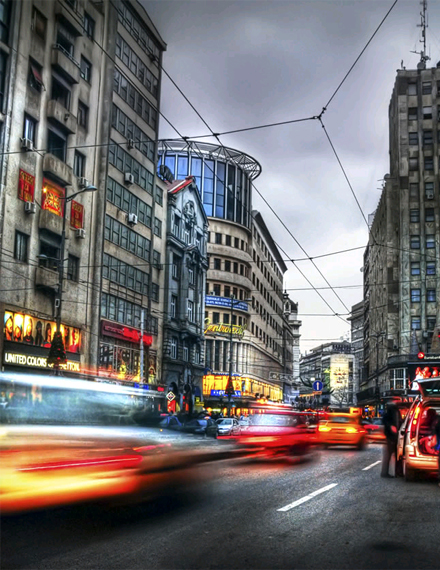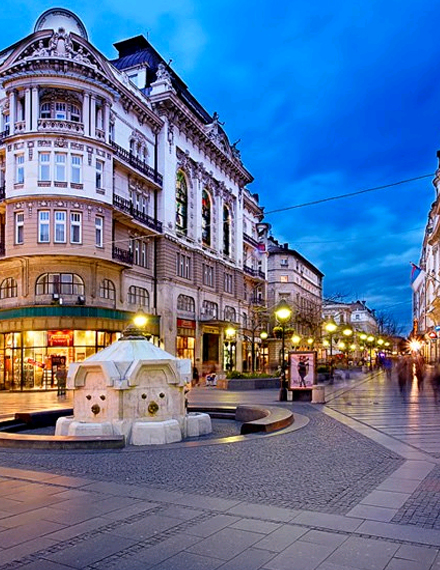
Belgrade is situated at the place where the Sava joins the Danube. Belgrade is one of the oldest cities in Europe and, beside Athens, the greatest urban whole of the Balkan Peninsula. The oldest archaeological artefacts from Belgrade area date back to the fifth millenium B.C. The members of a Celtic tribe founded Singidunum in the III century B.C., while the first record of the name Belgrade dates back to 878 A.D. During its long and tumultuous history, Belgrade has been conquered by 40 armies, and 38 times it has been raised up from the ashes!
Belgrade is the capital of Serbian culture, education and science. It has the greatest concentration of institutions of national importance in the field of science and art. There is the Serbian Academy of Sciences and Arts, established in 1886 as the Serbian Royal Academy: the National Library of Serbia, established in 1832; the National Museum, established in 1841 and the National Theatre, established in 1869. The city is also the seat of the Belgrade University, founded in 1808 as the Great School, and the seat of the University of Art.

Belgrade is the centre of culture and art of Serbia. It is Belgrade where our most notable artists create, where over 11.000 theatrical performances, exhibitions, concerts, performance events, and other artistic programs are presented and where prominent authors in the world of art are hosted. Belgrade is the centre of the highest state and national institutions of culture and art: Serbian Academy of Arts and Sciences, the National Library of Serbia, the National Museum, the National Theatre and the University of Arts.
The City of Belgrade is the founder of 36 cultural institutions (11 theatres, 8 institutions for protection of cultural values, 4 libraries, 13 cultural centers and galleries) and the supporter of 2 public companies, at the same time the contributor in the implementation of schedules and scheduled attractions of 231 institutions and artistic associations.

Belgrade lies 116.75 metres (383.0 ft) above sea level and is located at the confluence of the Danube and Sava rivers. The historical core of Belgrade, Kalemegdan, lies on the right banks of both rivers. Since the 19th century, the city has been expanding to the south and east; after World War II, Novi Beograd (New Belgrade) was built on the left bank of the Sava river, connecting Belgrade with Zemun. Smaller, chiefly residential communities across the Danube, like Krnjača, Kotež and Borča, also merged with the city, while Pančevo, a heavily industrialized satellite city, remains a separate town. The city has an urban area of 360 square kilometres (140 sq mi), while together with its metropolitan area it covers 3,223 km2 (1,244 sq mi). Throughout history, Belgrade has been a crossroads between the West and the Orient.
On the right bank of the Sava, central Belgrade has a hilly terrain, while the highest point of Belgrade proper is Torlak hill at 303 m (994 ft). The mountains of Avala (511 m (1,677 ft)) and Kosmaj (628 m (2,060 ft)) lie south of the city. Across the Sava and Danube, the land is mostly flat, consisting of alluvial plains and loessial plateaus.
Belgrade lies in the humid subtropical (Cfa) climate zone, with four seasons and uniformly spread precipitation. Monthly averages range from 1.4 °C (34.5 °F) in January to 23.0 °C (73.4 °F) in July, with an annual mean of 12.5 °C (54.5 °F). There are, on average, 31 days a year when the temperature is above 30 °C, and 95 days when the temperature is above 25 °C. Belgrade receives about 690 millimetres (27 in) of precipitation a year, with late spring being wettest. The average annual number of sunny hours is 2,112.








